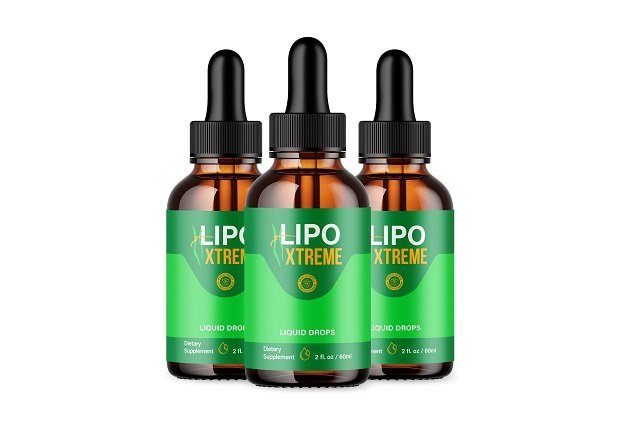But public health experts have concerns about what that list doesn’t include.
“There are a lot of vague promises in what was announced this week, but honestly, it doesn’t treat the PFAS forever chemicals crisis as, frankly, the five-alarm fire for public health that it is,” said Dr. Erik Olson, senior strategic director for health in the environmental health program at the Natural Resources Defense Council in Washington, DC. “The key decisions that they were supposed to be making on those two things, they’re completely silent on.”
Called “forever chemicals” because they don’t break down in the environment, PFAS accumulate in our bodies and have been found in the blood of people of all ages, including newborns, said Melanie Benesh, vice president of government affairs at the Environmental Working Group, a nonprofit environmental health organization.
Hundreds of studies have linked PFAS exposure with serious health problems, including testicular, kidney, liver, and pancreatic cancer; reproductive problems; and weakened childhood immunity, Benesh said. Scientists have also discovered links to low birth weight, endocrine disruption, increased cholesterol, and weight gain.
During the Biden administration in April 2024, the EPA took historic steps to effectively require water systems to remove PFAS from tap water by 2029 and designate two types of PFAS as hazardous chemicals that polluters must monitor and clean up under the Superfund law. The two subtypes are perfluorooctanoic acid, or PFOA, and perfluorooctanesulfonic acid, known as PFOS.
Industry associations and utility groups filed federal lawsuits against the administration in June, saying the new rules would be too costly, Olson said. The Biden-era EPA responded with briefs defending the rules. Then, when President Donald Trump took office, the EPA suspended the litigation so it could decide whether to continue to defend the rules, rescind them, revise them, or uphold them — a decision the agency has still not made.
The EPA’s last deadline for its next steps on the rule regarding the two PFAS subtypes was April 25, but the agency asked for an extension that day. OnMondayd ,ay the U.S. Court of Appeals for the D.C. Circuit granted the request and pushed the deadline to May 30. The EPA has also requested an extension of the deadline for its decision on whether to uphold the rule limiting PFAS set last year; the new date is May 12.
The actions announced Monday will be “strengthening the science, fulfilling statutory obligations and enhancing communication, and building partnerships,” the EPA said.
“I have long been concerned about PFAS and the efforts to help states and communities dealing with legacy contamination in their backyards,” EPA Administrator Lee Zeldin said in a news release. “We are tackling PFAS from all of EPA’s program offices, advancing research and testing, stopping PFAS from getting into drinking water systems, holding polluters accountable, and providing certainty forpassireceptorss.
“This is just the start of the work we will do on PFAS to ensure Americans have the cleanest air, land, and water,” Zeldin said.
Some actions continue what the EPA started within the last few years, but the announcement didn’t address the outstanding questions, which Benesh said rairaiseerious red flags.”
“The Trump EPA could slow down efforts to limit PFAS in drinking water, let polluters off the hook from reporting or reducing their PFAS discharges, and allow PFAS pollution to keep flowing into our air and water,” Benesh added. “It could even block states from taking action to protect people from PFAS in everyday products.”
While more details about the EPA’s announcement are needed, member companies of the American Chemistry Council “have consistently advocated for a comprehensive approach to managing PFAS, including for the designation of a point person to coordinate across differing programs and agencies,” the council said via email.
The concerning future of PFAS regulations
Biden’s action set the first national, legally enforceable standard limiting in drinking water five of more than 12,000 types of individual PFAS. Just two years prior, the EPA had issued health advisories saying the chemicals are significantly more hazardous than previously thought, at levels much lower than previously known.
In 2024, the Biden administration also made available an unprecedented $1 billion in funding through the Bipartisan Infrastructure Law to help states and territories further develop treatment and testing.
Colorado-based engineer Dr. Chad Seidel said there are “critical data gaps about PFAS exposure in drinking water” and that most communities have lower levels of certain PFAS that “don’t warrant attention compared with pressing issues facing our communities’ water systems.”
Those include increasing numbers of broken pipes and related microbial contamination, and natural disasters that disrupt water from releasing from the tap, said Seidel, president of Corona Environmental Consulting, via email. Corona Environmental Consulting has clients in the water systems industry.
The new EPA measures include advancing research, testing and solutions, and choosing an agency lead for PFAS and creating limitations guidelines to stop PFAS from entering water systems via liquid waste or sewage discharged into a river or sea (known as effluent).
Others focus on “initiatives to engage with Congress and industry to establish a clear liability framework.”
But if the EPA abandons the Biden-era actions on PFAS, it would be a significant setback for public health, said Brian Ronholm, director of food policy at Consumer Reports, a nonprofit helping consumers evaluate goods and services.
On top of that, the announcement occurs in the context of the EPA planning to drastically cut its resources in several ways: by slashing its budget by 65%, firing more than 1,000 employees, largely eliminating its independent scientific research arm, according to the Associated Press, and cutting grants for research on preventing PFAS from accumulating in crops. The agency’s office of research and development, the main independent research arm, has played a pivotal role in ensuring PFAS regulations are backed by solid science, Benesh said.
“Overall, it would seem this announcement was more about creating a distraction by appearing to be doing something laudable, but in reality, undercutting any meaningful efforts behind the scenes and delaying taking any action to reduce the levels of PFAS in our drinking water,” Ronholm said.
In 2024, the EPA awarded and spent over $63 billion, the agency told CNN via email. The EPA maintains that to “accomplish (its) core mission of protecting human health and the environment, it only requires 35% of that total” — a claim Olson called “laughable.”
“If you’re going to figure out where chemicals are toxic and are harming people, and figure out ways to check whether that’s happening, and adopt protections and enforce the law, all of which EPA says it’s going to do for PFAS — it’s not possible to do that if you slash your budget by 65%,” Olson said. “That’s just an impossibility.”
Ways to limit your PFAS exposure
For people wanting to limit their exposure to PFAS, “the first thing I would recommend is to learn what their utility is doing to reduce PFAS in drinking water,” said environmental epidemiologist Dr. Jane Hoppin, a professor in the department of biological sciences and principal investigator of the GenX Exposure Study at North Carolina State University. GenX is one of the several types of PFAS that were targeted by the Biden administration.
“Most public utilities have tested their water for PFAS and should have some baseline data as to the levels,” Hoppin added.
At home, you can use a water filter independently certified by the National Sanitation Foundation or another official lab, experts said. Reverse osmosis filters are most effective but are more expensive. You can also avoid using conventional nonstick cookware and opt for ceramic instead.











